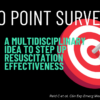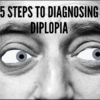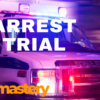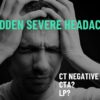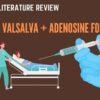Have you ever wanted to order a test, especially a radiological one and after hours at that and were made to feel inept, for asking? It’s after 11pm, here’s the how the conversation goes:
PK: “Hello Dr (fill in space) PK here, one of the ED consultants. Sorry to bother you, but I wanted to order a CT angio on a 62 year old gentleman with left sided neck pain, in whom I’m concerned about a carotid dissection”
Sounds reasonable right?
Radiologist:”Does it have to be done tonight?”
PK: “Well, yes, that’s why I’m calling you”
Radiologist:”Does the patient have any neurology?”
PK: “Not really. He had some fleeting arm numbness, but this was on the same side. The mechanism is good. One of his grandkids jumped off the trampoline and grabbed him around the neck. Now he has para-vertebral pain and some pain posterior to the sternocleidomastoid, but it’s not reproducible.”
Radiologist: “It doesn’t sound like much. Sounds more muscular. Do you really think its a dissection?”……. and it goes on….. Finally I add………..
PK:”This patient has had a previous spontaneous vertebral artery dissection. We need to do this”
You might be asking yourself, “What did the angio show?” Does it matter? Now, not all radiologists are like this. The point made however, is that you are the clinician. If you are concerned, you need to do the test.
Radiologist:”Well, It’s normal”(as it was in this case), with all sorts of implications in the voice.
Great! Think of how you’d feel however if you hadn’t done the scan and the patient did have a dissection and stroked-out overnight, waiting for the scan in the morning, or, if you sent the patient home and he came back with a stroke. Remember, you are the clinician. The decision is yours.
Carotid Artery Dissections- Some info that might help.
Up to 20% present with no symptoms whatsoever. 25% present with ipsilateral neck pain and carotid artery dissections account for about 20% of strokes in the less than 45 year old group.
They can be spontaneous(about 3 per 1000 of the population), especially in patients with connective tissue disorders. However, the incidence in blunt injuries, is up to about 3%. This is the group that I’m interested in. If we act quickly and find these patients, then anticoagulation can decrease the risk of stroke and neurological morbidity (J Trauma. 2001;51:279-285).
Patients can present with symptoms such as headache or facial pain, or neck pain, that will make us think of the diagnosis. In other cases the signs will be far more apparent and patients may have amaurosis fugax, focal weakness or a Horner’s Syndrome.
The concern is that symptoms are not always there and in most cases symptoms do not appear until up to 72 hours after injury (J Trauma 1994:37:473-9). We must maintain a level of suspicion that allows us to predict who may be at risk of a dissection and investigate those patients.
We don’t have totally sensitive and specific criteria as yet for blunt injury and I am not aware of any large randomised studies, however the ‘Denver’ Criteria, shown below, look at signs and symptoms, as well as injury patterns(J Trauma 1999;47:845-53).
Clinics 2005:60(6):489-96.
This table gives us specific criteria, but it also allows us to develop some more general guidelines. These are the rules of thumb I use:
1 Facial fractures– including mandible
2 Any hyper-extension and rotation of the cervical spine
3 Any fracture of a foramen where a blood vessel passes through it– assume the vessel is injured e.g., base of skull.
4 Any high cervical injury.
I hope this helps.
Keep the good work up everyone. You are the front line! Remember, you will get a higher degree of negative tests, because we do a lot of searching and screening. All those that are positive get admitted. The inpatient team’s scans are all positive, because you’ve found the condition!
Remember……..”The knowledge you take into your shift does matter”


